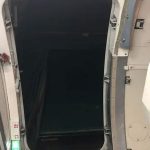1. What is laser welding?
Laser welding is an efficient and precise welding method that uses a high-energy density laser beam as a heat source. It is one of the important aspects of the application of laser material processing technology. Generally, continuous laser beams are used to complete the connection of materials. The metallurgical physical process is very similar to electron beam welding, that is, the energy conversion mechanism is completed through a "key-hole" structure. The equilibrium temperature in the cavity reaches about 2500 ℃, and the heat is transferred from the outer wall of the high temperature cavity to melt the metal surrounding the cavity. The small hole is filled with high-temperature steam generated by the continuous evaporation of the wall material under the irradiation of the light beam. The light beam continuously enters the small hole, and the material outside the small hole flows continuously. As the light beam moves, the small hole is always in a stable state of flow. The molten metal fills the void left by the small hole and condenses with it, and the weld is formed.
2. Advantages of laser welding
(1) Fast speed, large depth and small deformation.
(2) It can be welded at room temperature or under special conditions, and the welding equipment is simple. For example, when the laser passes through an electromagnetic field, the beam will not shift; the laser can be welded in vacuum, air and certain gas environments, and can be welded through glass or materials that are transparent to the beam.
(3) Laser welding can weld refractory materials such as titanium and quartz, and can weld heterogeneous materials with good results.
(4) After the laser is focused, the power density is high. When welding high-power devices, the aspect ratio can reach 5:1, and the highest can reach 10:1.
(5) Micro welding is possible. The laser beam can obtain a small spot after being focused, and can be accurately positioned with precision laser welding, which can be used in the assembly welding of micro and small workpieces that are automatically produced in large quantities.
3. Disadvantages of laser welding
(1) The assembly precision of the weldment is required to be high, and the position of the beam on the workpiece must not be significantly shifted. This is because after the laser is focused, the spot size is small and the weld is narrow, which is filled with metal materials. If the assembly accuracy of the workpiece or the positioning accuracy of the beam does not meet the requirements, it is easy to cause welding defects.
(2) The cost of lasers and related systems is relatively high, and the one-time investment is relatively large.
Please keep the source and address of this article for reprinting:Analysis on the Advantages and Disadvantages of Laser Welding
Reprint Statement: If there are no special instructions, all articles on this site are original. Please indicate the source for reprinting.:Cnc Machine Wiki,Thanks!^^


